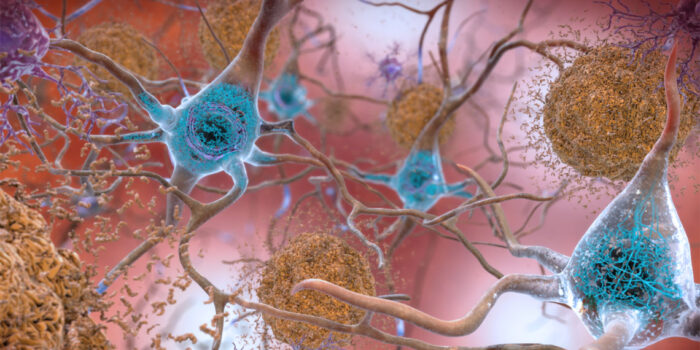A latest examine has revealed important insights into the early mind modifications related to Alzheimer’s illness, specializing in quantity loss in key mind areas. The researchers discovered that quantity loss within the basal forebrain and hippocampus is extra pronounced in people with excessive ranges of amyloid-beta, a protein linked to Alzheimer’s, even earlier than cognitive signs turn into obvious. The impact of amyloid-beta focus on the tempo of mind shrinkage (quantity loss) assorted between mind areas. The examine was printed within the Neurobiology of Aging.
Amyloid-beta is a peptide that accumulates within the mind and types plaques, disrupting communication between neurons and resulting in their demise. This peptide, a trademark of Alzheimer’s illness, contributes to the progressive decline in cognitive features. Over time, the buildup of amyloid-beta impairs neurons’ skill to type new connections, essential for studying and reminiscence.
This accumulation can even impair synaptic plasticity, the flexibility of neurons to type new connections. Over time, the lack of neurons turns into widespread, resulting in a lower within the quantity of neuronal matter in affected mind areas, leading to mind shrinkage.
Examine writer Ying Xia and her colleagues wished to research the character and magnitude of quantity loss within the basal forebrain and hippocampus areas of older people with and with out Alzheimer’s illness. Because the mind naturally loses quantity with age, resulting in total cognitive decline, the researchers aimed to find out if the tempo of this decline is related to the extent of amyloid-beta within the mind.
Information for this examine got here from 516 people aged 60 years or extra taking part within the Australian Imaging, Biomarker and Life-style (AIBL) examine of growing older. Initially of the examine, 40 of those people had Alzheimer’s illness, 62 had delicate cognitive impairment, and 414 have been with out cognitive impairments.
Initially of the examine, individuals underwent positron emission tomography (PET) imaging to evaluate amyloid-beta ranges, magnetic resonance imaging (MRI) to evaluate mind volumes, and accomplished cognitive assessments. They have been adopted for as much as 14 years, with a mean follow-up of 5 years. Throughout this era, individuals accomplished at the least another MRI, with 61% finishing three or extra MRIs, whereas the remaining individuals accomplished two.
Primarily based on their situation firstly of the examine, individuals have been categorized as both having or not having cognitive impairment and as both having excessive or low ranges of amyloid-beta plaques of their brains. Initially of the examine, 56% of individuals had neither cognitive impairments nor excessive amyloid-beta ranges. Twenty % had excessive amyloid-beta ranges however no cognitive impairment. Seventeen % had each cognitive impairment and excessive amyloid-beta ranges, whereas 8% had cognitive impairments with low amyloid-beta ranges.
People who have been cognitively impaired and people with excessive amyloid-beta ranges tended to have decrease volumes of the basal forebrain and the hippocampus firstly of the examine. Over time, outcomes confirmed that each the basal forebrain and hippocampus in individuals with excessive amyloid-beta ranges misplaced quantity quicker in comparison with these with low amyloid-beta ranges.
“These findings strongly help the early and substantial vulnerability of the BF [basal forebrain region] and additional reveal the distinctive degeneration of BF subregions in regular growing older and AD [Alzheimer’s disease],” the examine authors concluded.
The examine sheds mild on the hyperlinks between amyloid-beta ranges and the tempo of mind shrinkage with growing older. Nonetheless, the examine authors notice that individuals on this examine tended to be higher educated than the overall inhabitants, had excessive scores on cognitive exams, and had few further medical circumstances. Outcomes would possibly differ if the examine have been carried out on people extra consultant of the overall inhabitants.
The paper, “Longitudinal trajectories of basal forebrain volume in normal aging and Alzheimer’s disease,” was authored by Ying Xia, Paul Maruff, Vincent Doré, Pierrick Bourgeat, Simon M. Legal guidelines, Christopher Fowler, Stephanie R. Rainey-Smith, Ralph N. Martins, Victor L. Villemagne, Christopher C. Rowe, Colin L. Masters, Elizabeth J. Coulson, and Jurgen Fripp.





